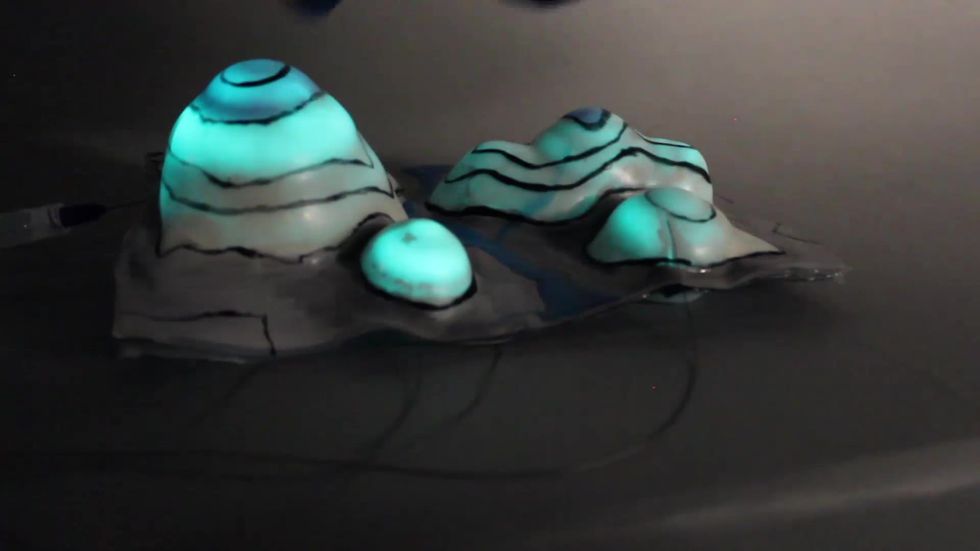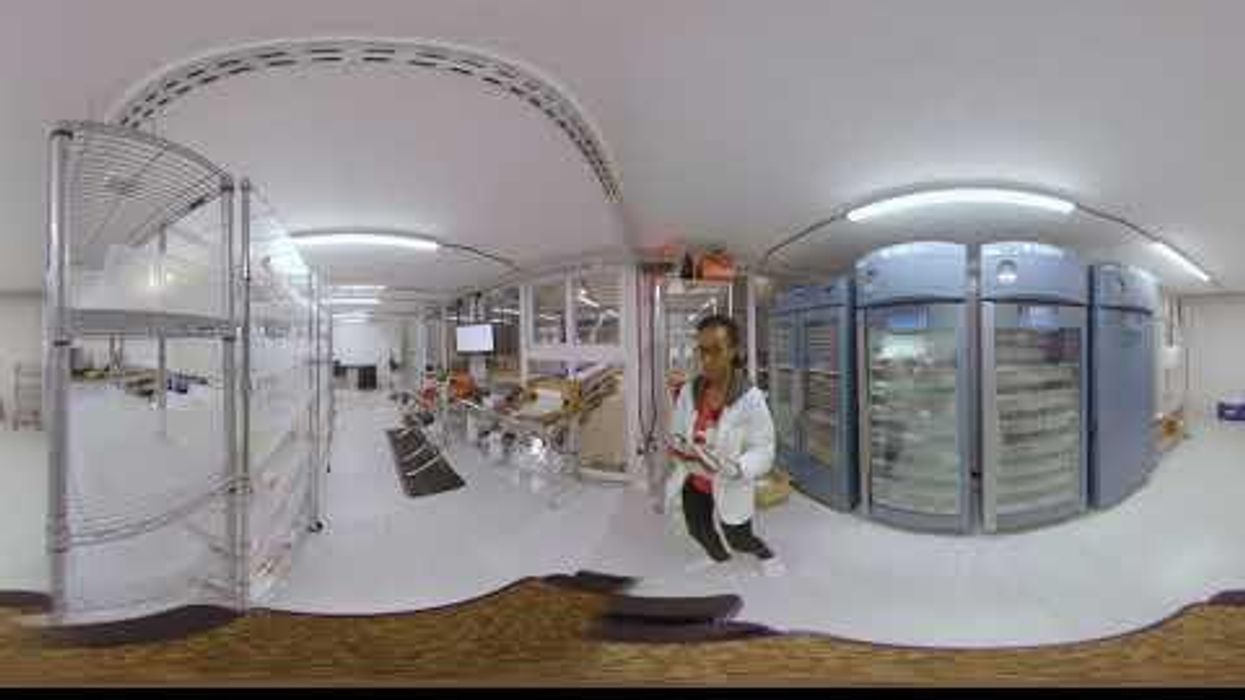There are many reasons to admire the octopus, including its ability to instantly pop up tiny protrusions of various shapes from its skin to match the texture of its background. This technique, combined with other camouflage tricks such as changing its color, allow an octopus to blend into to almost anything—even boats.
Those protrusions, called dermal papillae, were the bio-inspiration behind a new elastic material that can morph into various shapes, and could provide a shape-shifting surface for soft robots.
Researchers from Cornell University in New York and the Marine Biological Laboratory in Massachusetts decided to build a material based on muscle groups that control papillae along the surface of an octopus tentacle. The material consists of a fiber mesh that simulates an octopus’s erector muscles, which contract to squeeze a protrusion into shape. They embedded that mesh in concentric rings within a rubber skin, which mimics an octopus’s connective tissue.
Using a compressed air cylinder, they inflated the rubber skin much like one might blow up a balloon. The fiber mesh held parts of the rubber in place while others expanded out. The team found that, with the right number and spacing of rings, they could form the skin into shapes that resembled a rock and an aloe plant.
Robert Shepherd, a co-author and assistant professor at Cornell University, says the material could be reformed hundreds of thousands of times without degrading. He and his collaborators recently described their research, funded by the U.S. Army and Air Force, in the journal Science.
Shepherd thinks their morphable skin could be applied to furniture, or used to create immersive virtual reality experiences in which participants can feel their surroundings. He also says it could someday be worn by robots—maybe even robots that look and move like an octopus.
The model that his group created is limited by the elasticity of the rubber itself, which can only stretch so far, and the fact that they can’t change the arrangement of the fiber rings once they’re enmeshed in rubber. Each model can therefore only adopt one shape, rather than continuously morph like an octopus’s papillae. But Shephard has ideas for how to make that possible, and to enable the material to change color as well.



